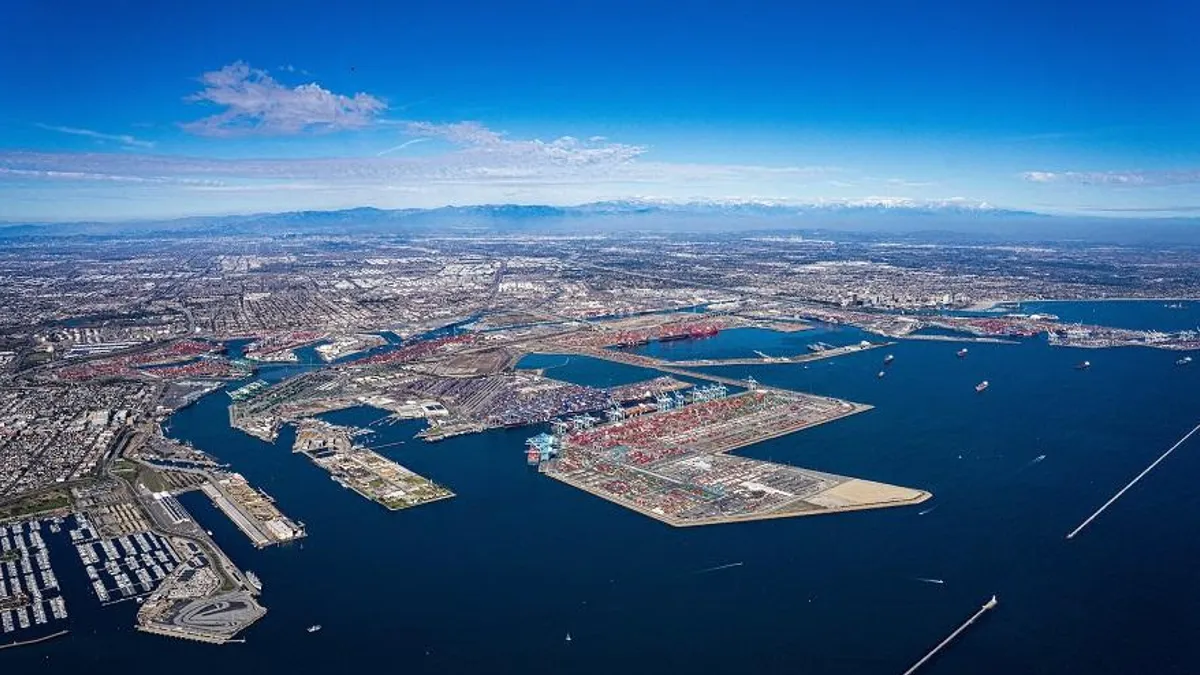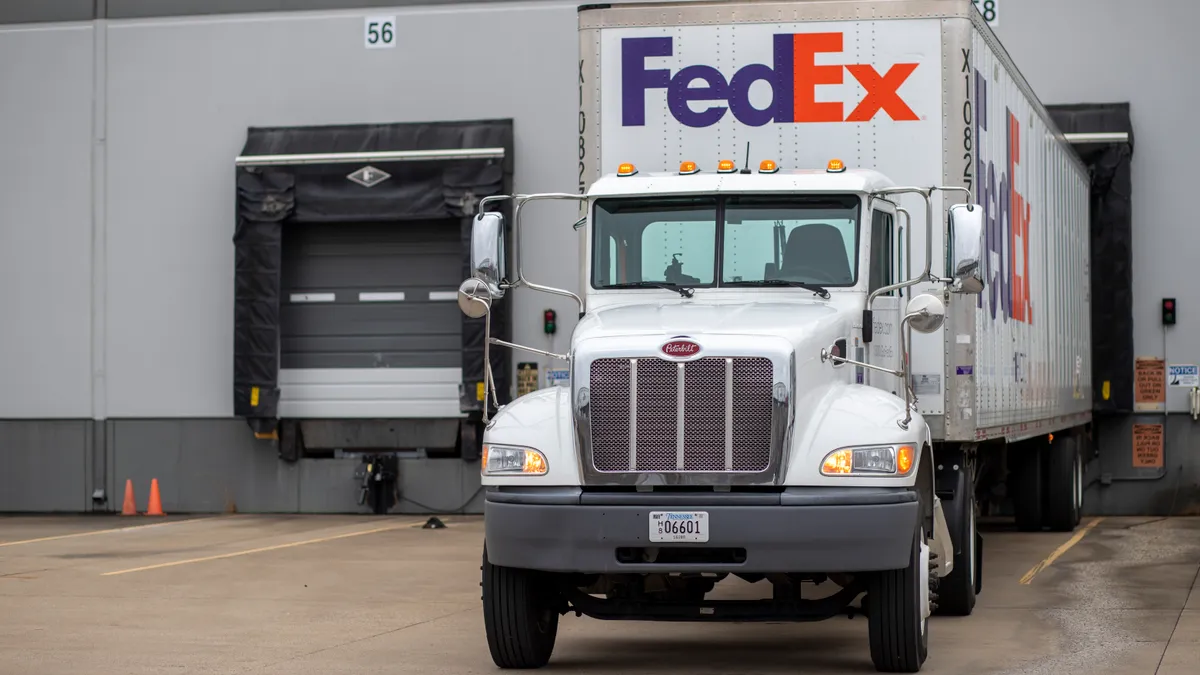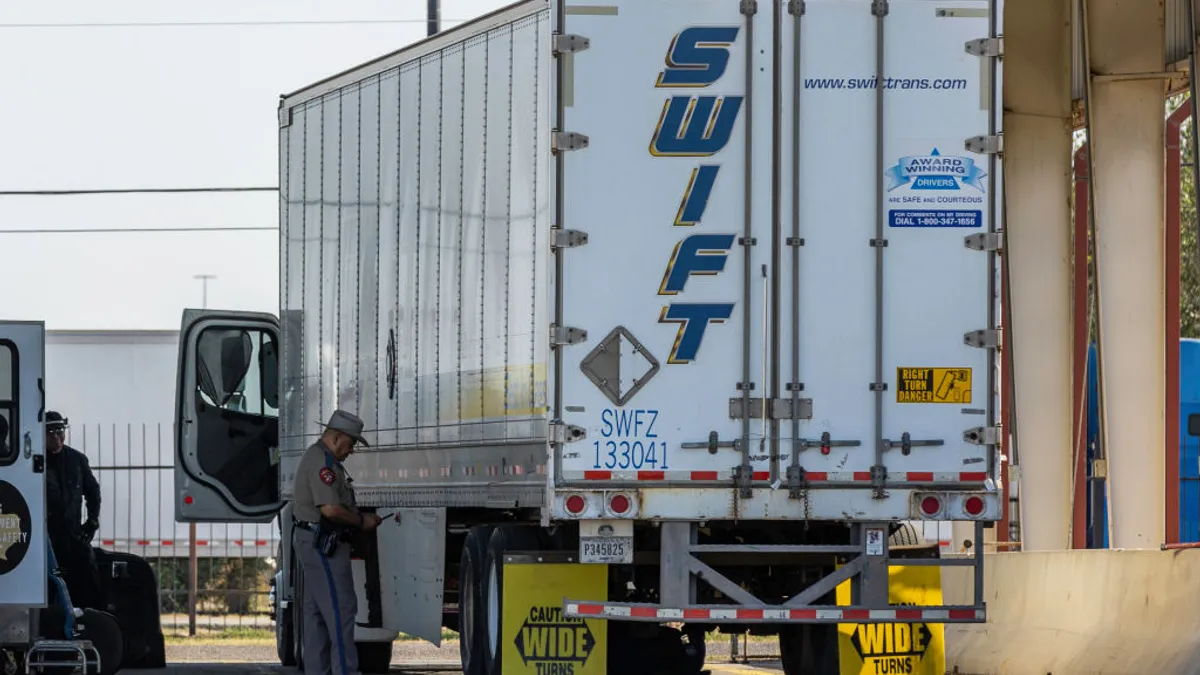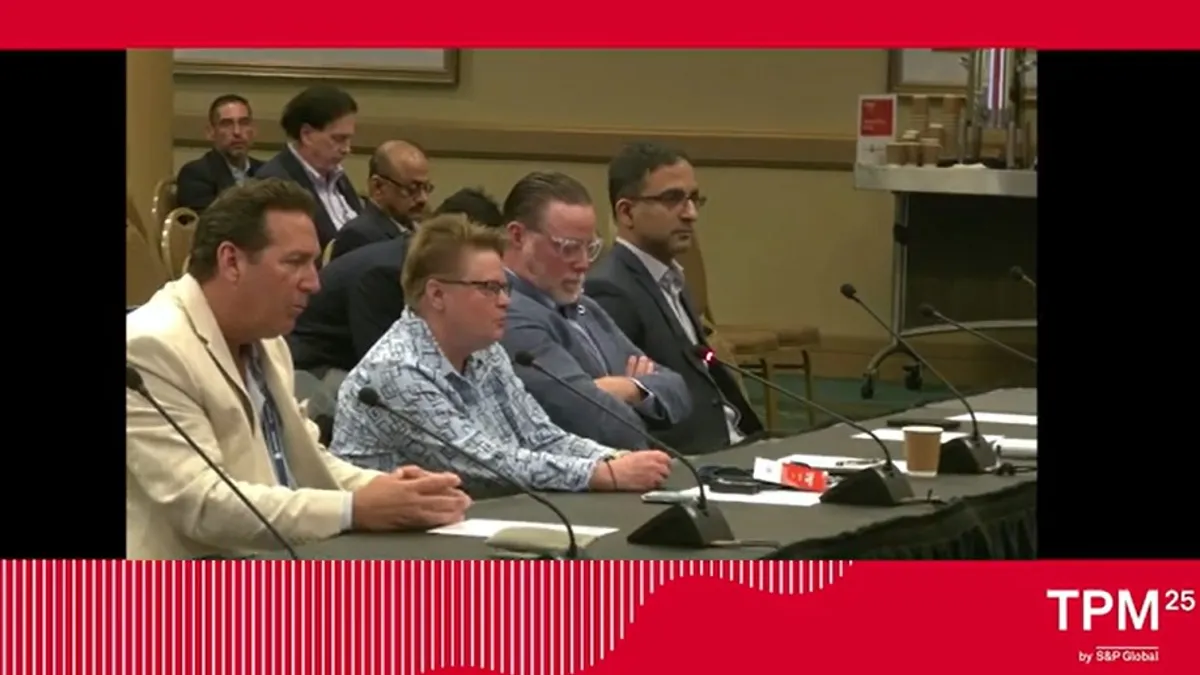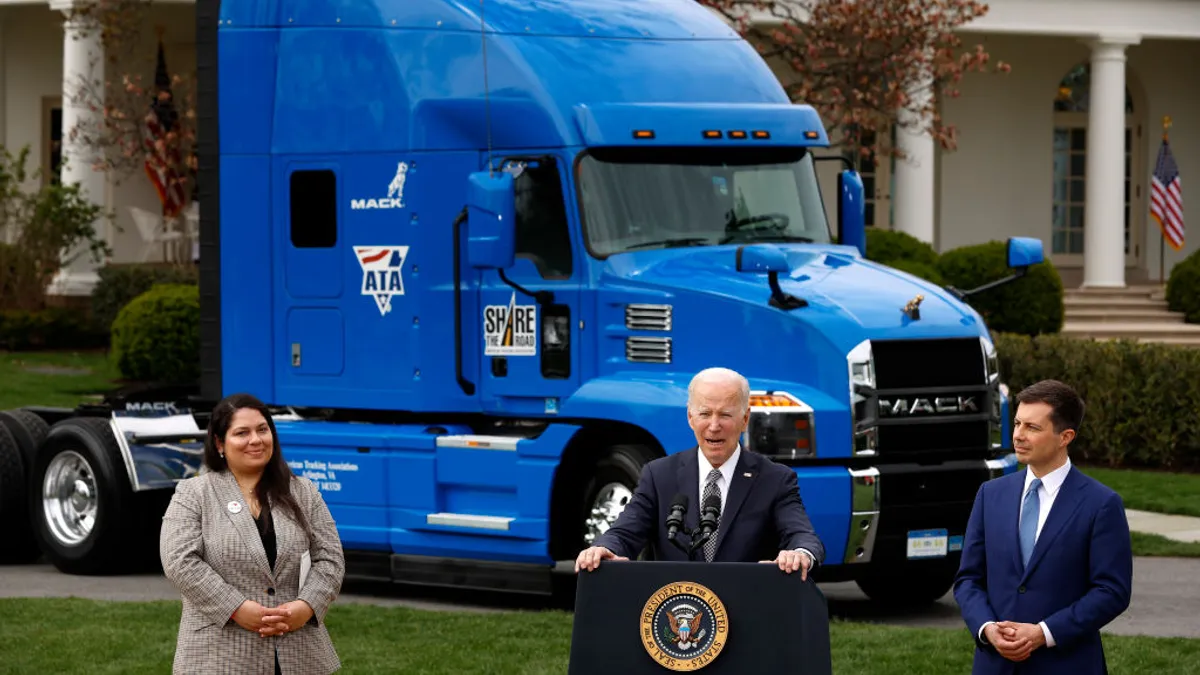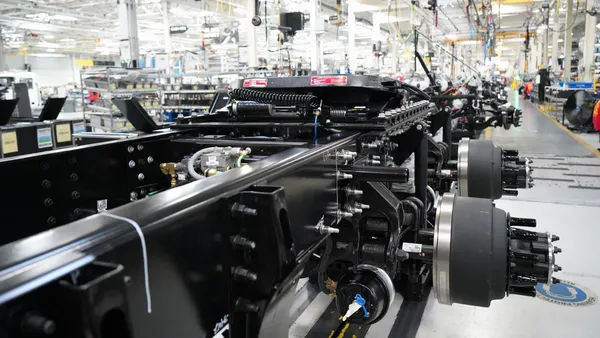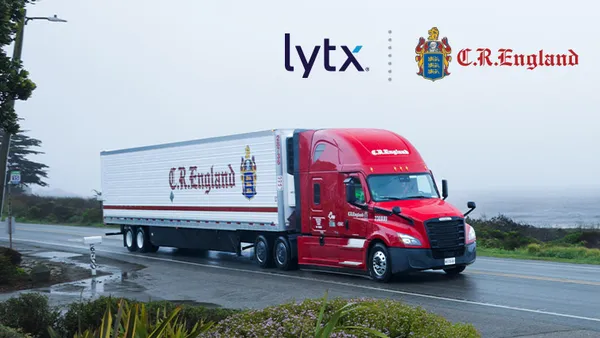With a historic bottleneck at the ports of Los Angeles and Long Beach in California, supply chain stakeholders seek to unearth the root causes of congestion. But the cause of the chokepoint at the San Pedro Bay ports is up for debate.
The ports and fleets have been bedeviled by trailer and container issues. Chassis and dry van trailers have been scattered across the country, and some are waiting longer than usual times to be unloaded and sent back to ports and warehouses. It's gotten so bad that some carriers are charging customers detention fees for lingering trailers.
"I've never seen that before," said Brent Hutto, chief relationship officer for Truckstop.com, a load board that posts 1 million freight assignments a day.
Trucking experts have said the industry can help solve the problem at the California ports, but they noted trucking issues are not solely — or even largely — to blame for the problems.
The crux of congestion
The global supply chain has been running above-average logistics operations for more than a year. It's led to plenty of speculation — inside and outside of the industry — on the problems and possible solutions.
Matt Schrap, CEO of Harbor Trucking Association, said the OTR driver shortage is one he hears a lot as a perceived solution to port congestion. He took to LinkedIn on Oct. 28 to tell people it's a false solution for ports. Adding drivers wouldn't help at all, he told Transport Dive. In fact, at the ports, there is no driver shortage at all, nor are chassis the main problem for port carriers, he said.
Schrap said he sees carriers sending drivers home because they cannot secure the appointments to return empty containers to free up chassis. More drivers would just cause more congestion given that fact, he said.
"There's not a driver shortage [at the ports]," said Schrap. The national OTR driver shortage is a "scapegoat" and "misdirection," he said.
"The empty containers are the crux of the problem ... It's choking out carrier yards," Schrap said.
Containers dwell on terminals
Schrap said some people will say carriers need chassis, but many of them are sitting under empty containers. Chassis are used as storage vehicles in that regard, Schrap said.
"It's not necessarily the truck issue," Hutto said. "It's the inefficiency of the yard itself."
About 65,000 empty containers were sitting on the Port of Los Angeles docks last week, the port's executive director, Gene Seroka, said during a media briefing Nov. 16. That leaves little vacant space on marine terminals for trucks to return empty containers, until vessels load the empties and take them back across the Pacific.
"It's productivity," said Schrap. "I cannot stress that enough."
RPT 11/19: 159 total ships inport LA/LB incl. 95 at anchor or loitering & 64 at berths. Of the 159, 101 are container ships incl. 71 at anchor or loitering & 30 at berth. 46 vessels loitering; 36 container ships, 4 tankers, 3 bulk, 3 general cargo.
— Marine Exchange (@MXSOCAL) November 19, 2021
More: https://t.co/5aY5tXPsjq pic.twitter.com/Euy1YYh0CX
Hutto said the port yards don't have enough employees working, which means freight is delayed in being offloaded and put onto trucks or trains. Seroka disputed that claim.
"We have ample longshore to do this work," Seroka said in October. The International Longshore and Warehouse Union workers have been on the job for an average of six days a week since March 2020. In addition, the union has added workers to its ranks over the past months and increased its training programs.
So, how can trucking help unclog the ports? The solution may be something trucking can only contribute to partially, as trucking is just one piece of the puzzle.
Freight modes consult on solutions
Speaking to the press at the American Trucking Associations' Management Conference & Exhibition in Nashville on Oct. 26, Chris Spear, ATA CEO and president, said trucking will come together with other modes, such as rail and ocean, and give recommendations on how to alleviate choke points at the ports and other parts of the supply chain.
"Locally, you can lift, temporarily, the ability to stack from two containers to four," said Spear. "That helps free up yard space. If you got yard space, you can move empty and full containers much more efficiently. And they're running out of space."
Long Beach recently allowed the stacking of four containers, but Schrap said companies then have to possess the machinery to stack containers, another logistical problem.
"If you got yard space, you can move empty and full containers much more efficiently. And they're running out of space."

Chris Spear
President and CEO of the American Trucking Associations
Municipal governments should do more, said Hutto. The ports are controlled by the city governments of Long Beach and Los Angeles. The cities and state of California have scrambled to see where the bottlenecks are.
On Wednesday, California Gov. Gavin Newsom touted the progress the ports have made and said he would authorize regulatory relief to speed up the flow of trucks out of the two gargantuan ports.
One move is to tackle labor constraints in the truck driver market by extending hours of operation at select DMVs. That will allow nearly double the number of monthly CDL tests, from 5,000 to 9,700, Newsom said at the Port of Long Beach.
Another is to ease weight limits to 88,000 pounds, up from 80,000 on state highways and interstates between the Port of Los Angeles, Port of Long Beach and distribution centers in California.
Schrap was dubious that the higher weight limits would help. Many containers arriving to the ports are filled to the brim with lightweight retail goods, such as shoes. HTA members aren't yet flocking to apply for permits with Caltrans to carry heavier loads.
At LA and Long Beach ports today talking about how we can alleviate supply chain issues.
— Gavin Newsom (@GavinNewsom) November 17, 2021
Good news -- we’ve seen a 32% DROP over 2 weeks for containers sitting on docks.
Today, CA’s issuing a temporary truck weight exemption on our highways to keep goods moving efficiently.
Schrap said his association members have taken measures by themselves by tackling the empty container issue. Trucking firms leased space outside of the ports and even in Arizona, "wherever they could find it," said Schrap.
But even the off-site storage solutions come with problems. Schrap said a survey found his members have at least 9,438 empty containers, but 8,117 are sitting atop chassis. If fleets use chassis for storage, they cannot use them for unloading.
Schrap said two things he would like to see are "sweeper vessels," ocean carriers who do nothing but take containers back to Asia. And the association would like to see more official empty-container yards — recognized by yard operators, the ocean carriers and equipment providers — where fees don't accrue.
Hutto said change won't arrive quickly because government entities, like big ships, turn slowly. And Spear said he also is not hopeful of a short-term miracle by the holidays.
"It's not going to be solved by Christmas," said Spear. "The fact that we work with other modes and our decision-makers to understand the problem is the quickest path to solving the problem."


